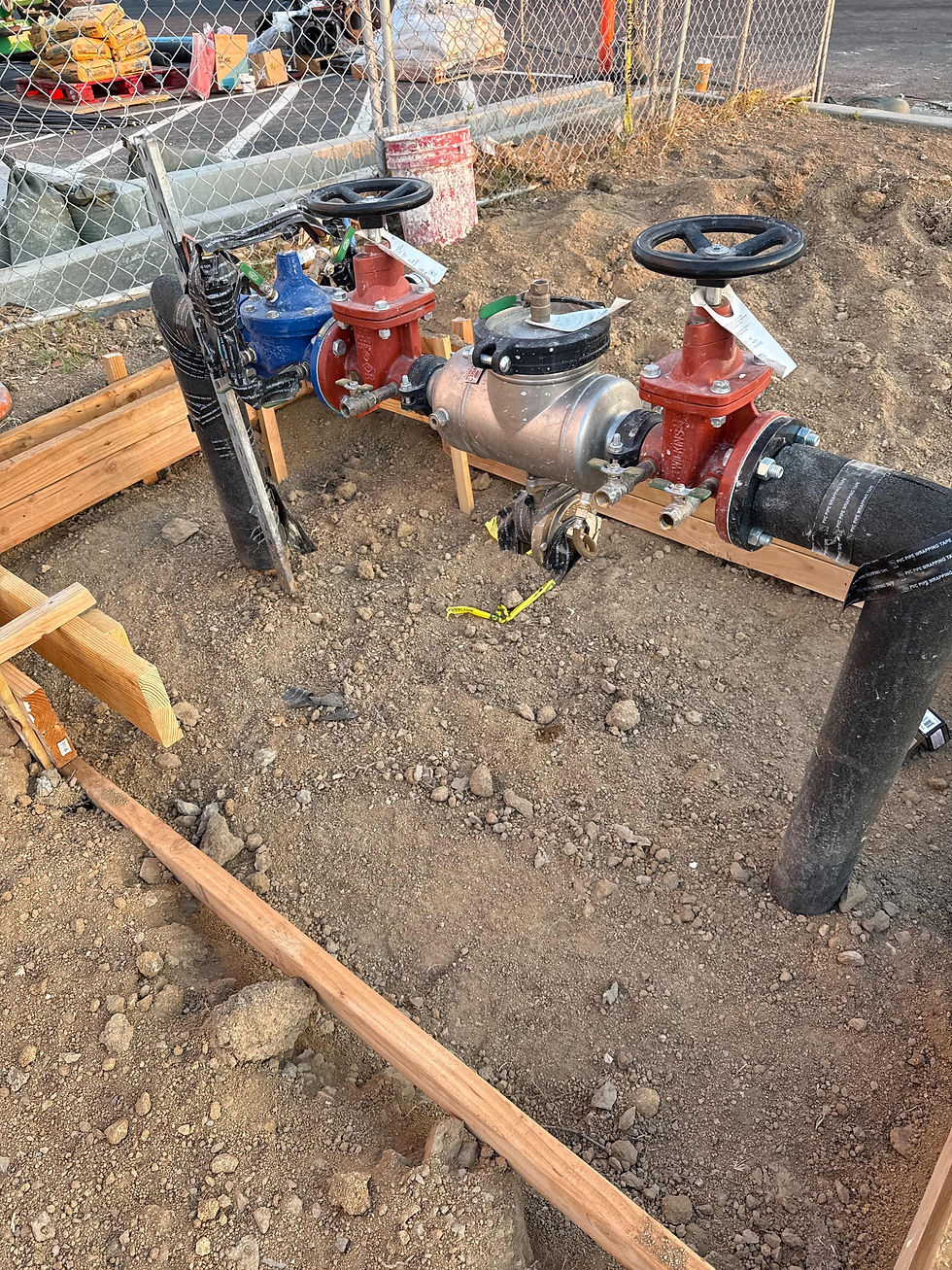Revolutionizing Water Safety: Innovative Strategies for Backflow Prevention
- bill57931
- Mar 8, 2024
- 2 min read

In the quest to maintain pristine water quality in our homes and communities, backflow prevention plays a pivotal role. Backflow occurs when a reversal in water flow introduces contaminants into the clean water supply, posing serious health risks.
Traditional methods for preventing backflow have been well-documented, but as technology advances and our understanding of water systems evolves, so too do the strategies for safeguarding against these risks. This blog explores groundbreaking approaches and cutting-edge advice for backflow prevention, offering a fresh perspective on securing our water systems against contamination.
Innovative Approaches to Backflow Prevention:
Smart Monitoring Systems: Leveraging IoT (Internet of Things) technology, smart monitoring systems can continuously track water pressure and flow rates throughout a plumbing system. These systems provide real-time alerts to homeowners and utilities at the first sign of irregularities, enabling swift action to prevent potential backflow incidents before they occur.
Eco-Friendly Landscaping Techniques: Sustainable landscaping practices can reduce the risk of backflow related to irrigation systems. Employing rain gardens, permeable paving, and strategically placed vegetation can naturally absorb runoff and minimize the pressure on urban drainage systems, thereby reducing backflow risks.
Advanced Material Use in Backflow Preventers: The development of new materials with enhanced durability and resistance to corrosion can significantly improve the longevity and reliability of backflow prevention devices. Research into materials like advanced polymers and non-corrosive alloys is leading to the next generation of backflow preventers that are more effective and require less maintenance.
Community Education Programs: Educating the public about the importance of backflow prevention and simple measures they can take to minimize risks is a powerful strategy. Community workshops, online resources, and school programs can raise awareness and encourage proactive maintenance of home plumbing systems to prevent backflow.
Integrated Water Management Solutions: Adopting a holistic approach to water management that includes backflow prevention as a core component can ensure comprehensive protection. This involves coordinating between municipal water suppliers, public health officials, and urban planners to implement system-wide safeguards and contingency plans.
Utilization of Artificial Intelligence (AI): AI and machine learning algorithms can analyze vast amounts of data from water supply systems to predict and prevent backflow incidents. By identifying patterns and potential vulnerabilities in the system, AI can recommend preventive measures and optimize the placement and maintenance of backflow prevention devices.
Conclusion: As our communities grow and the demands on our water systems increase, the need for effective backflow prevention has never been greater. By embracing innovative strategies and leveraging advancements in technology, we can revolutionize the way we protect our water supplies from contamination.
From smart monitoring systems to AI-driven analytics, the future of backflow prevention is bright, promising safer and cleaner water for all. Let's commit to adopting these forward-thinking approaches, ensuring that our efforts to safeguard water quality are as dynamic and resilient as the communities we serve.







Comments